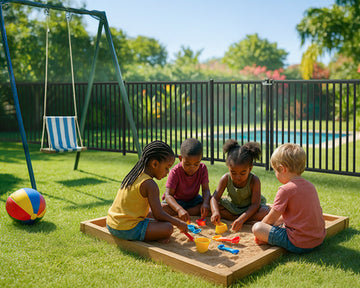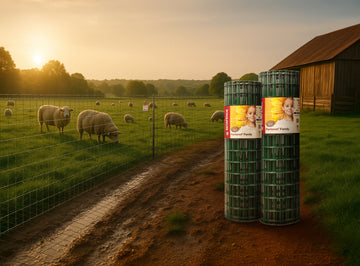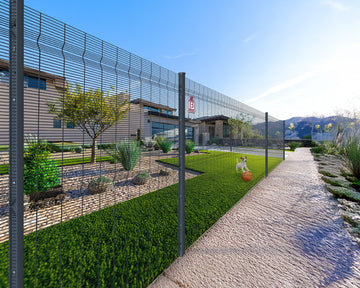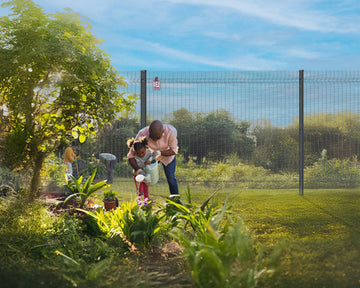
To ensure that your property's perimeter is secured while maintaining visibility, wire mesh fences, such as our EasyView or Pantanet systems, are a great option. These perimeter fencing solutions are both attractive and strong, offering a clear view of your garden.
However, it's important to be aware of and take into consideration the types of vegetation planted near the fence to ensure that the fence remains in good condition and isn't unduly damaged by Mother Nature. Certain types of vegetation can even undermine security.
How Vegetation Can Damage Wire Mesh Fences
Vegetation that is left to grow unchecked near wire mesh fences can damage them in several ways. Trees and shrubbery growing too close to the fence can end up growing through it, causing the mesh to bend and sag over time. In this way, overgrown vegetation can compromise the structural integrity of the fence, breaking apart welded sections and bending the wires apart.
Bigger plants can also put a lot of pressure on fence posts, causing them to bend or even break in severe circumstances. Unstable fence posts create a security risk as they can be more easily toppled.
Additionally, excess shrubbery and plants growing against the fence can trap moisture against it, causing rust and corrosion to occur prematurely.
Types of Plants to Avoid Planting Near the Fence
In general, it's advised to avoid planting anything close to the fence. A good rule of thumb is to keep at least one foot of space between the fence and the nearest plants. A greater distance is required for large plants such as trees.
Fast-growing vines, creepers, or climbers should generally not be planted near or on the fence, as they can quickly and easily overwhelm it.
Large trees and shrubs with extensive root systems should also be planted far away from the fence to avoid damage or the compromise of its structural integrity. Large branches near the fence pose a potential risk as well, especially during storms, as they can fall on the fence.
Safe Plants to Grow Near the Fence
Small shrubs and ornamental grasses are good choices for beautifying the perimeter without compromising the fence's strength and integrity. Flowers and bulb plants are also generally a safe choice, as their root systems are not a threat to the fence’s foundations.
To ensure plants don't encroach on the fence, a buffer zone can be created by installing a raised bed or border along the fence line and planting vegetation within it.
Contact us at Betafence today about our EasyView and Pantenet boundary fence solutions. Our wire mesh fences make boundary fencing beautiful and safe!



